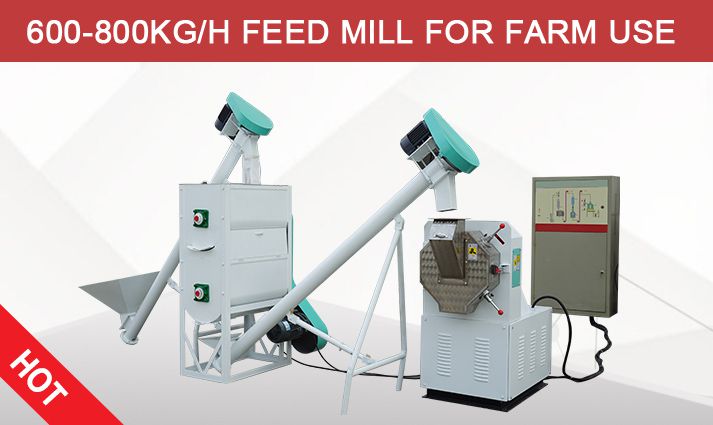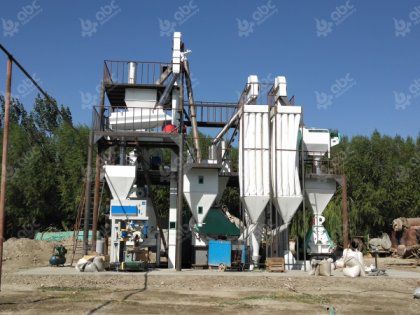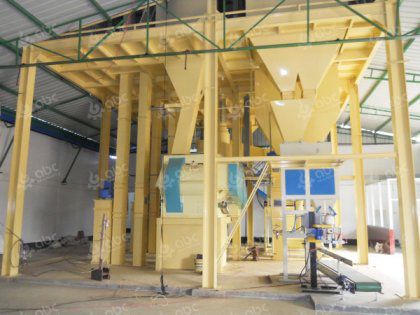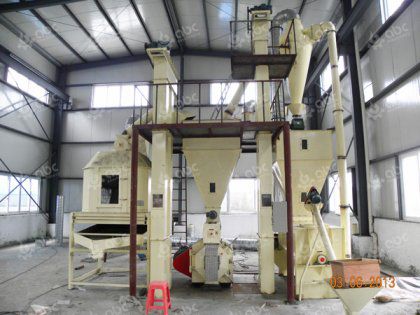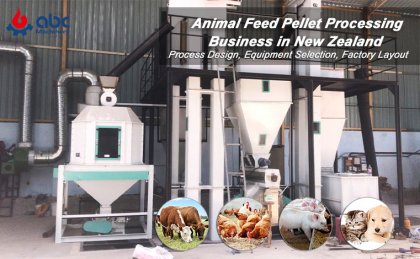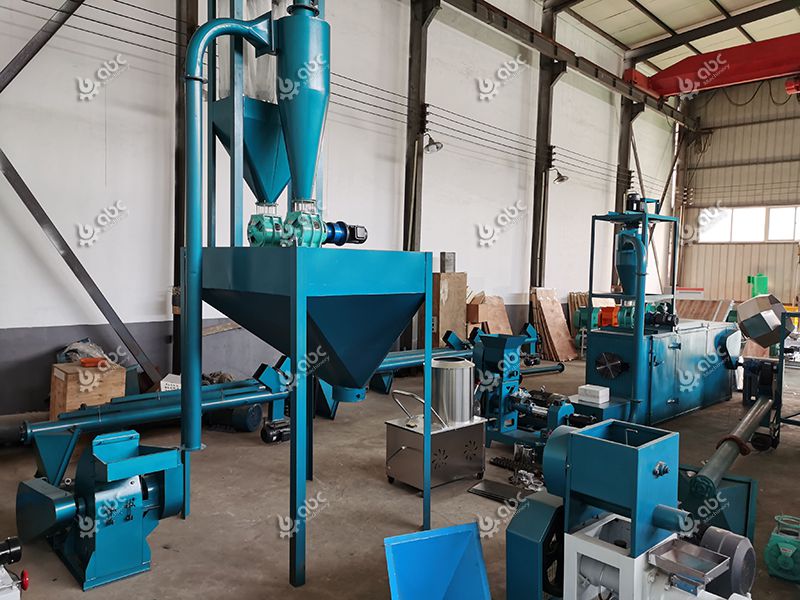1. Equipment Selection:Function and Type of Feed Pellet Crushing Machine
Crushing is an operation method to overcome the cohesion of solid materials by mechanical method. It is one of the most important processes in feed milling and an important factor affecting feed pellets quality, output, power consumption and processing cost.
The Purpose of Feed Crushing Process
-
A. Increasing the surface area and particle size of feed is beneficial to animal digestion and absorption.
Animal nutrition experiments show that reducing particle size improves the digestion and absorption of dry matter, protein and energy, and reduces the feed-meat ratio;
-
B. Improving and increasing the processing performance of materials.
The granularity of materials can be basically the same by crushing, so as to reduce the grading of materials after mixing evenly. For trace elements and some small-sized materials, only when they are crushed to a certain extent and enough particles are guaranteed, can they meet the requirement of mixing uniformity. For granulation process, the granularity of crushed materials must consider the interaction between crushing granularity and granular feed. The granularity of crushed feed can affect the durability of granules and the stability of aquatic feed in water.
-
C. The granularity of crushed feed can significantly improve the conversion rate of feed.
Reducing the excretion of animal feces, improve the utilization rate of animal feed, and improve the efficiency and quality of the following feed processing, such as mixing, conditioning, granulation and expansion.
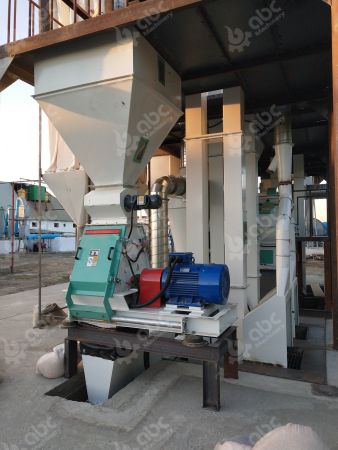 The power allocation of crusher generally accounts for about 1/3 of the total power allocation in feed factories. How to reasonably select advanced pulverizing equipment, design the best technological route and use pulverizing equipment correctly is very important for feed production enterprises. The SFSP series hammer mill is generally selected for livestock feed. It is widely used because of its high efficiency, good crushing performance and wide adaptability. It can crush feed ingredients into 40~60 mesh, which is suitable for the production of pig feed, chicken feed, cow feed and sheep feed. The model has the following characteristics:
The power allocation of crusher generally accounts for about 1/3 of the total power allocation in feed factories. How to reasonably select advanced pulverizing equipment, design the best technological route and use pulverizing equipment correctly is very important for feed production enterprises. The SFSP series hammer mill is generally selected for livestock feed. It is widely used because of its high efficiency, good crushing performance and wide adaptability. It can crush feed ingredients into 40~60 mesh, which is suitable for the production of pig feed, chicken feed, cow feed and sheep feed. The model has the following characteristics:
-
Adopts large diameter and low speed structure, low noise and vibration reduction;
-
Sets feeding guidance mechanism, which can make raw materials available. The material enters the mill from the left or right side, and the rotor can work in positive and negative conversion to ensure that the tangential feeding of the material is compatible with the rotation of the rotor, as well as the emergency shutdown function;
-
The installation of the screen is directly inserted and then pressed by the operating door, which makes the loading and unloading convenient;
-
The wear-resistant hammer with tungsten carbide surfacing welding can increase the service life of the ordinary hammer by 7-8 times;
-
The additional safety device can be used. After the operation door is opened, the power of the crusher cannot be started to ensure safety.
In addition, choosing centrifugal fans matched with crushers can improve the crushing efficiency with half the effort. Material through the hammer and sieve friction, should be immediately discharged into the crushing chamber, so as not to cause blockage, resulting in increased temperature in the crushing chamber, or even cause dust explosion. How can the crushed material be quickly discharged from the crushing chamber? After the centrifugal fan starts, a continuous negative pressure environment will be formed in the crushing chamber and settling chamber. Eligible materials will pass through the sieve quickly under the negative pressure to complete the crushing of materials. Centrifugal fan can absorb the moisture of finished products, reduce the humidity of finished products, is conducive to storage, improve grinding efficiency by 10%~15%, reduce dust level of grinding chamber, so it is very important to select a centrifugal fan with suitable wind pressure to improve grinding efficiency.
Sample project: 2-4TPH Animal Feed Mill Plant for Cattle and Poultry
2. Equipment Selection:High Quality Feed Pellet Mixing Machine
Mixing is a kind of operation in which various feed ingredients are mixed with each other under the action of external force after metering and proportioning to make them evenly distributed. In order to ensure that livestock and poultry can eat a diet containing various nutrients at every meal, it is necessary to ensure that the ingredients are evenly distributed in the whole batch of feed, especially the "active ingredients" which have a great impact on the growth of livestock and poultry, such as vitamins, trace elements, pharmaceuticals and other trace ingredients, and even more uniform distribution is required. Therefore, in the feed production, the working condition of the main mixer not only determines the quality of the product, but also plays a decisive role in the productivity of the production line and feed quality, so it is known as the "heart" of the feed factory.
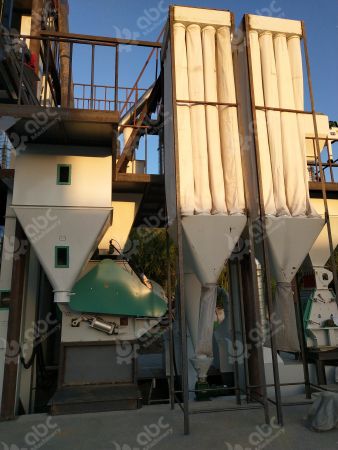 The main technical indexes of the mixer are: mixing quantity per batch, mixing uniformity, mixing speed and material residue rate in the mixer.
The main technical indexes of the mixer are: mixing quantity per batch, mixing uniformity, mixing speed and material residue rate in the mixer.
- Higher requirements for mixing uniformity: feed standards stipulate that the coefficient of variation of mixing uniformity of formula feed is less than 10%, and the coefficient of variation of mixing uniformity of premixed feed is less than 5%;
- Short mixing time: mixing time determines mixing cycle, mixing time can affect the productivity of production line;
- Low residual rate in machine: to avoid cross-contamination, ensure each batch. The product quality, the residue rate in the mixer is less than 1%, and the premix mixer is less than 0.8%. At present, advanced models can reach less than 0.01%.
- Mixers should meet the requirements of reasonable structure, simplicity, no leakage, easy inspection, sampling and cleaning. At present, the most widely used mixer in the market is the biaxial blade mixer, which mixes lightly and softly and has no segregation of mixtures. Especially when the particles (micro-additives) are in the flow state, the diffusion mixing effect is better. The material forms a fluidized zone in the mixer, coupled with convective mixing and shear mixing, which makes the mixing speed of the biaxial blade mixer faster than that of the general mixer. Fast and high mixing uniformity. During the use of the mixer, it is necessary to change the sealing strip regularly to prevent leakage, so as to ensure the uniformity of all materials in the mixing process. At the same time, it is necessary to clean the mixer regularly to prevent the materials sticking to the inner wall of the mixer from breeding bacteria and mildewing, which will affect the quality of livestock and poultry feed.
Sample project: Small Feed Mill Plant for Farm Home Use
3. Equipment Selection:Cost-effective Feed Pellet Making Machine for Sale
Granulation refers to the process of compacting a single raw material or mixture and extruding the die hole to form granular feed by mechanical action. The purpose of pelletizing is to make pellets from fine, dust-prone, palatable and difficult-to-transport feed by utilizing the effects of heat, moisture and pressure in the process of pelletizing.
Compared with powdered feed, pellet feed has the following advantages:
- Increasing feed digestibility: in the process of feed granulation, due to the combined effects of water, temperature and pressure, some physical and chemical reactions occur in feed, starch gelatinization and enzymatic activity are enhanced, which can make feeding animals digest feed more quickly and convert it into weight gain.
- Reduce animal picking: Formula feed is made up of a variety of raw materials according to the nutritional needs of animals. It can prevent animals from choosing their favorite food from the powder and refusing to take in other ingredients by granulating. Because pellet feed can maintain uniformity in the process of storage, transportation and feeding, the loss of feed can be reduced by 8%~10%.
- Make storage and transportation more economical. The bulk density of powder increases by 40%~100% after granulation.
- Avoid automatic grading of feed ingredients and reduce environmental pollution. In the process of powder storage and transportation, because of the different bulk density of various powders, it is easy to produce grading. There is no grading of feed ingredients after granulation, and the particles are not easy to dust. The pollution of air and water quality caused by the particles in the feeding process is much less than that of the powders.
- Killing Salmonella in Animal Feed: Salmonella is retained in animal tissues when ingested by animals. People who eat animal products infected with this bacteria will develop a gastrointestinal disease caused by Salmonella. The method of steam high temperature conditioning and granulation can kill Salmonella existing in animal feed and reduce the spread of pathogens.
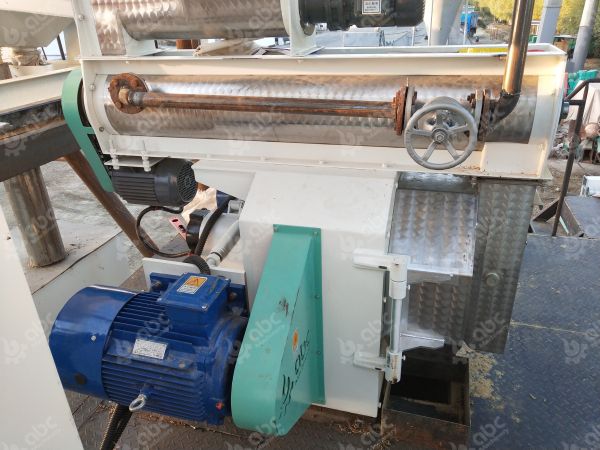
Factory Price Feed Pellet Making Machine for Sale
Pellet granulator is the key equipment to produce pellet feed, and it is also one of the most power-consuming equipment in feed factories. Its energy consumption accounts for more than 40% of the total energy consumption of feed factories. Therefore, comprehensive consideration should be given to the selection of equipment. At present, the main market is ring die granulator, which is characterized by large output, uniform discharge, good shape and stable quality. According to the different driving modes, ring mould granulator can be divided into gear type and belt type. Generally, medium and small feed factories usually use belt driven feed pellet. Because of the characteristics of flexible transmission, its product surface is smooth and its shape is beautiful, which is accepted by the majority of feed factories. In addition, its cost is relatively low.
When the granulator is in use, the material must be strictly conditioned: before granulation, the material must be conditioned, the pressure of steam must be stable (4 ~ 8bar), and the steam must be dehydrated before conditioning. If the steam contains a large amount of water, it will cause the blockage of granulation. After conditioning, the material has been matured to a certain extent, which can significantly improve the utilization rate of nutrients in feed, reduce energy consumption by 10%~20%, and improve production efficiency. In the process of granulation, the humidity and temperature of the material should be checked frequently.
The humidity inspection method is: after gently kneading by hand, the material can be lumped. The temperature and water content should be controlled steadily at 75-95℃ and 15.5-17% depending on the variety of granulation. The cooling of granulated particles must not be too fast or insufficient. If the cooling is too fast, the surface of granulated materials will crack, the cooling is not enough, and the temperature is too high, which will make the material moisture absorption and cause mildew. The material after cooling should be consistent with the room temperature.
Case Study of A Successful Complete Feed Production Line Projects
When a feed mill plant built in Xinjiang, China chose equipment in the initial stage of construction, due to the limited budget and equipment layout space, the investor removed the dust collector and centrifugal fan equipped with crusher from the process, which simplified the process, saved installation space and investment cost, but brought many problems to later production.
After the official operation of this project, the production management staff found that even if the crusher works 24 hours a day, it was difficult to meet the feeding demand of mixer and granulator in time, which greatly affected the production efficiency. After the technicians of feed production equipment came to the site, two solutions were put forward: one is to replace the crusher with larger output, without increasing the matching equipment to save space, but this will increase the total power of the equipment; the other is to increase the dust collector, centrifugal fan, material sealing auger and other equipment matching the crusher, so as to improve the efficiency of the crusher, but to increase more installation space. After much consideration, the feed factory finally chose the second scheme which is more economical and efficient. After field installation and commissioning, the output of the crusher has increased significantly, and it can fully meet the needs of the back-end mixer and pellet making machine.
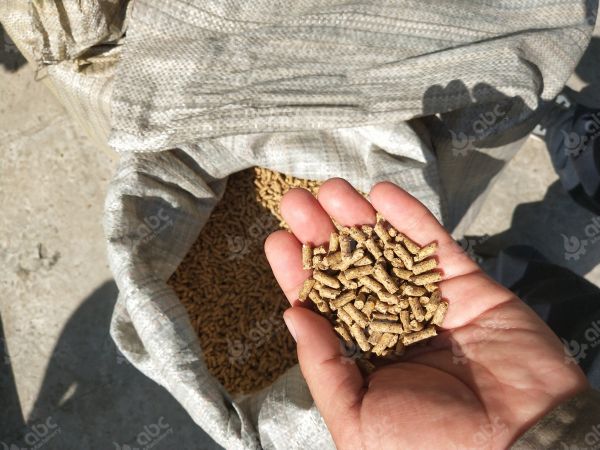
High Quality Animal Feed Pellet Product
Practice has proved that the selection of feed mill plant equipment must be scientific, and the supply and demand output of each section should be strictly matched. According to practical experience, the output of front-end equipment should be 20%~30% higher than that of back-end equipment in order to ensure the efficient operation of the whole system. In addition, we should have a certain foresight in the construction of the plant.


